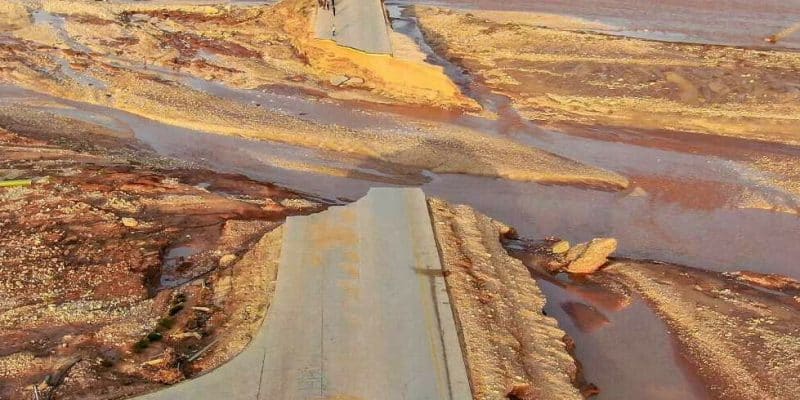Global warming is being blamed as the main cause of storm Daniel, which devastated eastern Libya on 10 September 2023. Coming from Greece via Turkey and Bulgaria, the extreme weather phenomenon caused massive flooding, killing thousands of people. In its 6th report, the Intergovernmental Panel on Climate Change (IPCC) predicted disastrous scenarios for Africa. Floods will displace 2.7 million people by 2050.
Libya has never before been so plunged into mourning by floods. Several towns and villages in the east of this North African country were affected on Sunday 10 September 2023, including Benghazi, Al Bayda and Battah. The city of Derna, where the phenomenon was most disastrous, must also be mentioned. The rains were so intense that a first dam and then a second broke, causing a wall of water to surge over the city of some 100,000 inhabitants.
The provisional death toll presented by the local authorities on the afternoon of Tuesday 12 September 2023 was 2,300. The humanitarian organisation Red Crescent added that almost 10,000 people were missing.
Before arriving in Libya, storm Daniel, the cause of the deadly floods, formed on 4 September 2023 in Greece, where villages were ravaged by water and 14 people were killed, according to official figures. The storm passed through Turkey, killing eight people, and Bulgaria, where it caused four deaths.
The theory of a climatic catastrophe
The explanations given so far put forward the hypothesis of global warming. While floods have not appeared as a result of climate change, each additional degree increases the amount of water vapour in the atmosphere, increasing the risk of heavy rainfall. Libya’s National Meteorological Centre said that the level of torrential rain was between 150 and 240 millimetres (mm), compared with the usual level of 4 mm.
According to Christophe Cassou, climatologist and director of research at the Centre National de la Recherche Scientifique (CNRS) in France, Daniel formed at the end of an “Omega” blockage, which consists of an anticyclone with very high temperatures in the centre, and rain with cool temperatures at both ends. The effects of this type of situation are being “boosted” by climate change. “With the same atmospheric circulation, this omega would not have had the same impact in the 1950s or 1960s,” explains the researcher.
To be sure that storm Daniel was caused by climate change, we will have to wait for the results of an attribution study. Researchers will be working to establish the precise extent to which climate disruption has made such a climatic phenomenon more likely.
Read also-AFRICA: €2.25m from the EU for flood resilience in three countries
In the first part of its 6th report, published on 9 August 2021, the Intergovernmental Panel on Climate Change (IPCC) indicates that global warming is accelerating faster than predicted. In Africa, United Nations scientists are predicting massive forced displacement of many households as a result of global warming. Flooding, for example, will displace almost 2.7 million Africans. Fishing in tropical Africa will be affected, with potential catches falling by 40-70%.
Boris Ngounou







